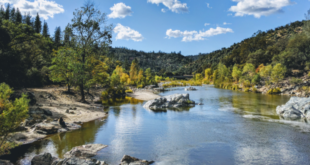Four environmental projects in California and Baja California, along the U.S.-Mexico border, will share in $327,000 awarded by the U.S. Environmental Protection Agency for assessing transboundary wastewater spill impacts, understanding of binational airshed data, improving waste management and reducing plastic bag pollution.
“These grants will fund projects designed to help mitigate health and environmental risks, advance economic development, and provide clean water and air for families living in the region,” said EPA Administrator Scott Pruitt.
The Scripps Institution of Oceanography at the University of California San Diego will receive $87,556 to study transboundary wastewater spill impacts along the Pacific coastline between Punta Bandera and Imperial Beach. The assessment will quantify the extent of the February 2017 wastewater spill in the San Diego/Tijuana region and lead to more accurate and timely beach advisories.
The University of Washington will install six air quality monitors near the San Ysidro port of entry with the U.S. EPA award of $99,935. The funds will be used to assess and prioritize sources of particulate matter (PM) through the new monitors at the busiest land port of entry in the Western Hemisphere. The community air study project will provide information on emissions entering the U.S. from Mexico and increase knowledge of this binational airshed.
Two other projects will share $139,285 to prevent transboundary waste from entering the Pacific Ocean, Tijuana River Estuary and New River. These projects will improve waste management along the U.S.- Mexico border through the increased use of reusable bags, promotion of recycling and the reduction of plastic bag marine debris.
The U.S. EPA awards will be matched by an additional $318,813 from the recipient organizations. The projects selected address the goals of the Border 2020 Program, a binational effort to protect human health and the environment in the U.S.-Mexico border region.
The funds were awarded in partnership with the North American Development Bank under the U.S.-Mexico Border 2020 environmental program. For more information on the Border 2020 Program, go to: www.epa.gov/border2020.
 California Water News Daily Your Source For Water News in California
California Water News Daily Your Source For Water News in California


